-
Posts
327 -
Joined
-
Last visited
Content Type
Profiles
Forums
Gallery
Events
Posts posted by jpalmer1970
-
-
It has been a while since I last posted any update - and to be honest I haven't had a lot of time to devote to modelling in the last few weeks. What time I have had has mostly been spent either reorganising tools and workspaces or taking just a few steps forward and then a few steps backwards with the build!
I thought it would be a good idea to get a proper spindle sander setup and as space doesn't allow me to have a dedicated spindle sander I instead purchased some sleeveless sanding drums to use in the drill press. The sleeves are 1 inch, 2 inch 2.5 inch and 3 inch in diameter. I made a little spindle sanding station so that there was a nice flat baseboard on which to place the pieces when they are being sanded - here is the 1 inch drum in the press.
I have made and then subsequently discard two attempts at making the stemson. The stemson is made from 15" stock and in each case I found it difficult to get the join between it and the stem nice and uniform. I am now on my third attempt and rather than using a cut out template from the plans I have this time traced the shape of the inner curve of my stem onto the piece of wood. This has then been cut out on the scroll saw and now needs sanding to ensure a snug fit. I have purchased a cheap A5 lightboard to help me with checking the fit of the joint and hopefully that will help me improve on my earlier less successful attempts!
One useful piece of knowledge I have recently acquired is that it isn't a good idea to use tracing paper as a template for any of the pieces. I had traced the shapes of the aft deadwood pieces on tracing paper and then glued then to some 15" stock but when I came to cut them out on the scroll saw I noticed that the act of gluing the tracing paper to the wood had actually resulted in the tracing paper becoming stretched in one dimension. Luckily this meant that my templates were too long rather than too short and so the pieces were still useable, but at least now I know not to do that again!
I have glued the three aft deadwood pieces together with black tissue paper in the joints. The top curve of the assembled pieces have been sanded to the correct shape but the base and the rear line of the aft deadwood is still a little oversize. I will sand those to size once I have milled in the shape of the stepping line. I also need to drill holes in the base of the aft deadwood so that it can be pinned to the centreline of the keel at some point in the future.
- Thukydides, Archi, CiscoH and 6 others
-
 9
9
-
Looking very nice. I too had the metal anchors and struggled with getting them painted. Lots of touch ups were needed during and after mounting them.
- Thukydides, PvG Aussie and Glen McGuire
-
 2
2
-
 1
1
-
This looks like an interesting build Harry. I also like those decals ! Thanks for the details about where you got them from.
- hof00 and Scottish Guy
-
 2
2
-
-
Many thanks Druxey! That is very helpful. It is a much simple solution than I had imagined. I was obviously over complicating it due to not understanding the various lines representing the shape of the transom, so thanks also for pointing out how they represent the curved nature of that piece.
-
9 hours ago, bdgiantman2 said:
I have copied and provided for you images from Gaetan Bordeleau that have been a big help to me in understanding and shaping the stern and will be using for my own model.
Thanks for this Brian. The exploded view is very helpful in understanding how all of these pieces connect. I'm puzzled as to the actual shape of the top of the inner post on my plans but I'll look at them again and see if this helps.
-
-
Hi folks,
I have been puzzling over the plans looking at the sternpost and the inner post and I'm having a bit if difficulty understanding how they are shaped where they meet up with the wing transom. This part of the plan has lots of lines for all of these various parts and I'm not sure sure which one is which!
Here is a scan of part of the plan and it is this area in the red oval that I am struggling with.
The sternpost shape is, I hope fairly obvious, and I have marked it in blue in the scan below. It appears to me to have a little 'hook' where it sits on top of the top of the inner post which is where the rabbet ends I believe. Is that correct, do you think? It is the shape of the top of the inner post that is confusing me the most as it appears that this is where the wing transom sits. I have marked out what I think is the correct shape in red below but looking at the illustrations in David's book the top of his sternpost seems to be complete flat, rather than having that little step? I fear I am missing something here and hopefully that may be obvious to more of you than it is to me!
Any advice and guidance would be most welcome as I would like to get theses pieces cut out of the stock. I thought I had it all sussed out originally but the more I look at them now the more confused I get - so some fresh perspectives from you all will certainly help. Many thanks in advance 🙏
- GrandpaPhil, mtaylor, Thukydides and 1 other
-
 4
4
-
Excellent work! Your attention to detail is certainly paying off here.
- Thukydides, AON, Glen McGuire and 2 others
-
 3
3
-
 1
1
-
 1
1
-
Just a brief update on the latest work on the keel and stem.
The rear of the keel tapers in width from 12" to 10" and so this was sanded to size. I also drilled the scarph joint with a #75 drill and used 24 gauge copper wire as bolts.
The stem was glued to the front section of the keel at the boxing joint. The front of the keel and the lower part of the stem also taper in width from 12" to 10" and so this was also sanded to size before the boxing joint bolts were added.
At present I haven't glued the forward section of the keel to the rear two pieces as I feel it might be easier to have the keel in two parts whilst I am shaping and fitting the other pieces which fit to it, such as the stepson and the deadwood etc. I am less likely to knock it and damage it if it is in two smaller parts rather than one longer piece. Finally at this stage I fixed the acrylic stem mount to the board.
- Thukydides, davyboy, mtaylor and 7 others
-
 10
10
-
Many thanks, Greg. I must admit I hadn't given any consideration to either of those points about the tissue paper so I am glad you raised those questions! I did some further tests today and I'm pleased to say that the tissue paper I have seems to be colourfast - I didn't have any problems with it either in debonding a join with isotropy alcohol or with adding a coating of wipe on poly, so it looks as though I was lucky 😀
-
I spent a little time this week experimenting with different ways to represent the tarred joints in the keel. I made up some test scarph joint pieces and tried out some of the alternate ways mentioned recently in Pirate Adam's log - black tissue paper, #2B pencil, #5B pencil and dark paint either mixed in the glue or just added to the edges of the joint. The #5B pencil seemed to smudge very easily and I also struggled with the paint option - perhaps I used too much but it just seemed to stain the sides of the join very easily, though I am sure it could easily be cleaned up. The #2B pencil and the black tissue paper both worked well and I felt that given the reddish hue of the myrtle, the tissue paper option seemed to present a cleaner and more defined joint, so that is what I have decided to proceed with.
I continued working on the lower stem piece gradually refining the shape so that it matched the plan on both the inside and the outside curve. The upper stem was them mostly shaped to size and then glued to the lower stem with a tissue paper lining to the join. The upper stem was then shaped to blend in with the curve of the lower stem. It seems like a really small achievement but I was very pleased to get these two pieces together and have them both match the shape on the plan - I can at least say now I am building the model, rather than just cutting wood into small pieces! 😀
Here is the joined stem - I still need to add some copper bolts to the joint and then taper the lower section to shape once it has been attached to the keel at the boxing joint. Both the forward and aft ends of the keel taper from 12" to 10".
And here it is just sitting against the boxing joint in the keel to see if I have all the angles correct.
-
Welcome to MSW !! 👍
- mtaylor and Keith Black
-
 2
2
-
Just a small update on the latest work.
I firstly purchased some more Australian myrtle from my local supplier - some thinner 10mm sheets and some 45mm deep pieces. Hopefully this stash will keep me going for quite some time. I haven't yet worked out exactly how much wood I need for the frames etc but I plan to have a look at that at some point in the coming weeks.
I also continued working on the keel and stem pieces. The lower and upper stem pieces were cut out of the 12" stock. I actually had to make another lower stem after some wayward sanding of the first attempt but I have now managed to get the two stem pieces to fit together nicely. I shaped the lower stem boxing joint and so far everything seems to be lining up well but I do need to cut out the recess on it for it to fit against the keel. I realised after the fact that it would probably have been easier to make the joint on the lower stem first and use that as a template with which to cut out the boxing joint on the keel, rather than the other way around - but that is one of the learning experiences.
I also cut the three keel sections to length and made the forward scarph joint. I cut this scarph with the table saw and may have gone a hair too deep with my cut but I will need to wait until I decide on how I am going to line the joints to see if it was too much. Tissue paper or thin paper may be enough to 'pad' out the joint perhaps. it won't be noticeable from the side of the keel but I do need to ensure that the joint is strongly glued. I have been reading the discussion on how to simulate the effect of the tarred joints in @Pirate adam's build log of the Crocodile and so i will experiment with the various methods suggested there. As the myrtle has a reddish hue I think a black joint may provide more contrast than a brown one but we will see.
Finally it was good to actually put the keel pieces onto the building board so that it looks like I have made som progress 😀. Nothing is glued or fixed at all so far as there is still much more to do to the keel in the coming weeks.
- Thukydides, davyboy, mtaylor and 10 others
-
 13
13
-
It is interesting to see how Occre want you to progress with this planking and shaping of the bow. Most kits have some sort of central false keel and bulkheads going all the way to the bow into which you might add filler blocks, but I have never seen this before where the first planking terminates well before the bow and the bow section is instead carved from blocks. Endeavour is a very bluff bowed ship and so perhaps that is the reason for this?
Good luck and I'm interested to see how it turns out. 👍
-
Looks like a very interesting project !
-
Thank you for another fantastic build!
- Blue Ensign and mtaylor
-
 1
1
-
 1
1
-
I have one of these and find it much more useful than a dremel for drilling small holes for eyebolts etc. The slower speed compared to the usual rotary tools (500rpm versus 5000+ rpm) and the small size of the unit allows for more accuracy I think. The drill press is also useful on occasion depending upon what you need to do - I seem to be terrible at drilling straight by hand....
It is basically a motorised pin vise, and not a cheap one at that, but still useful for me.
- Canute, Scottish Guy, mtaylor and 1 other
-
 4
4
-
Your intricate rope work at this scale is very impressive !
- Thukydides, AJohnson, Glen McGuire and 1 other
-
 3
3
-
 1
1
-
1 hour ago, allanyed said:
An alternative that I switched to some years ago is to print on full size sheets of label paper. Cut out the drawing of the part somewhere near the lines, peel off the backing and stick on the wood.
That's another good option Allan, especially if you can get easy peel off labels. Some price tags or manufacturers labels are a devil to get off cleanly when the glue is stronger than the strength of the paper!
-
9 hours ago, Stuntflyer said:
In certain cases, rather than shaping each section individually, I just cut the joints accurately and then join the various sections together. After doing that it's easier to get a more accurate outline of the joined parts while the templates are still attached.
That's a great tip - thank Mike.
I have some Elmer's School Glue and various types of glue sticks so I will experiment and see what works best. I guess you need the template to stick well but also come off cleanly when you are finished with the template. Certainly so far from my very limited experience, I think I am finding it easier to work with pieces with paper templates rather than just pencil outlines directly on the wood.
-
9 hours ago, dvm27 said:
You should cut as close to the line as you are comfortable doing without cutting into the line. I used to leave about 1/16" using my scroll saw then sanded to the lines on my disk sander or oscillating spindle sander. After some practice I'm able to cut to within a whisker of the line and that is sufficient. Fairing after the hull is assembled will blend everything together.
Thanks Greg. I appreciate the advice. I need a lot of practice and hopefully experience will eventually come my way 👍
-
-
9 hours ago, VTHokiEE said:
I think that how close you get to the line probably depends on the part. My experience with the frames on my cross section was that I should have left a a good bit more on the parts than I did to account for fairing (maybe leaving 1-2 mm? outside the line to account for fairing)
Thanks - this sounds like very good advice. 👍

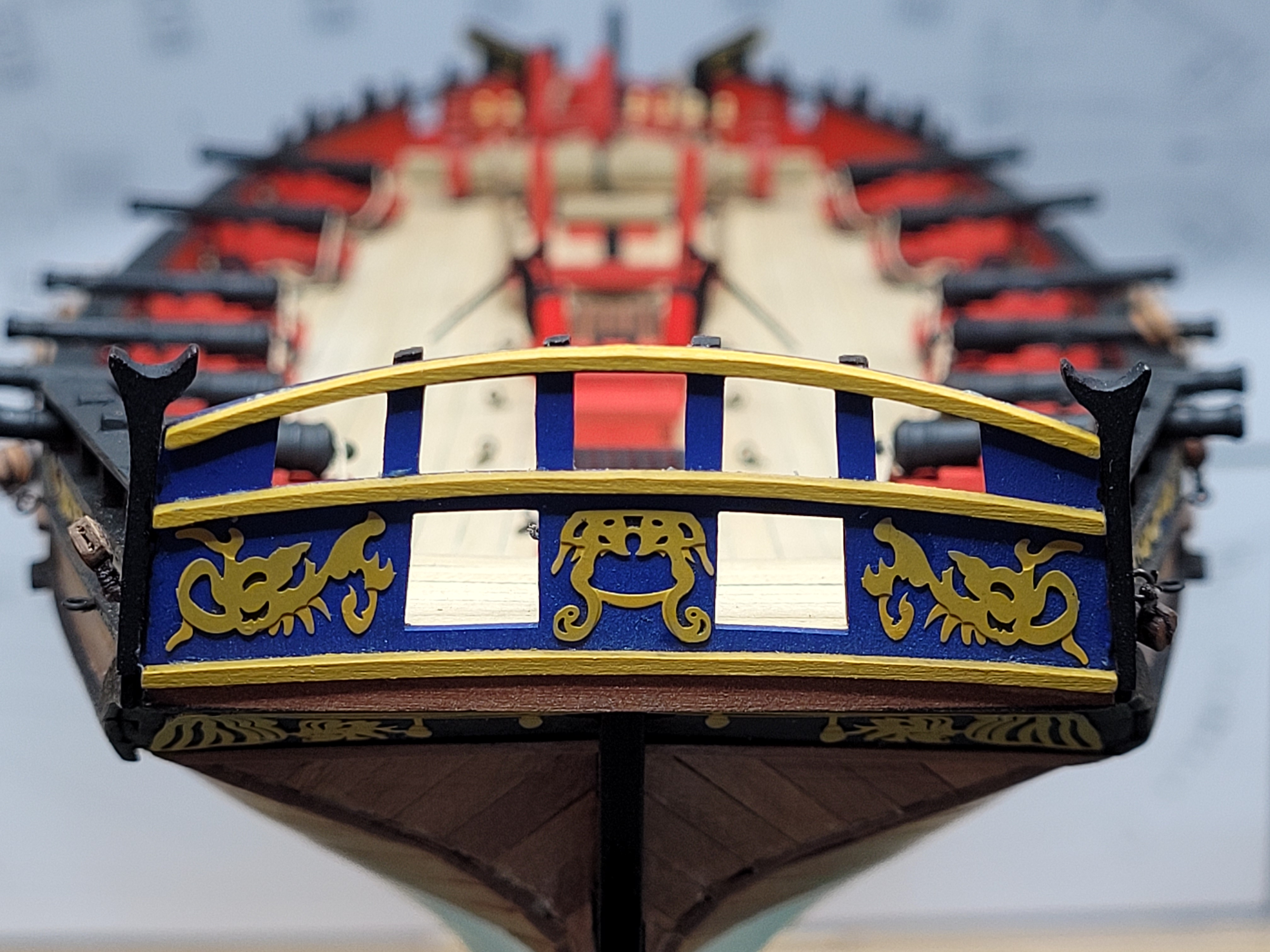
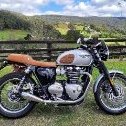
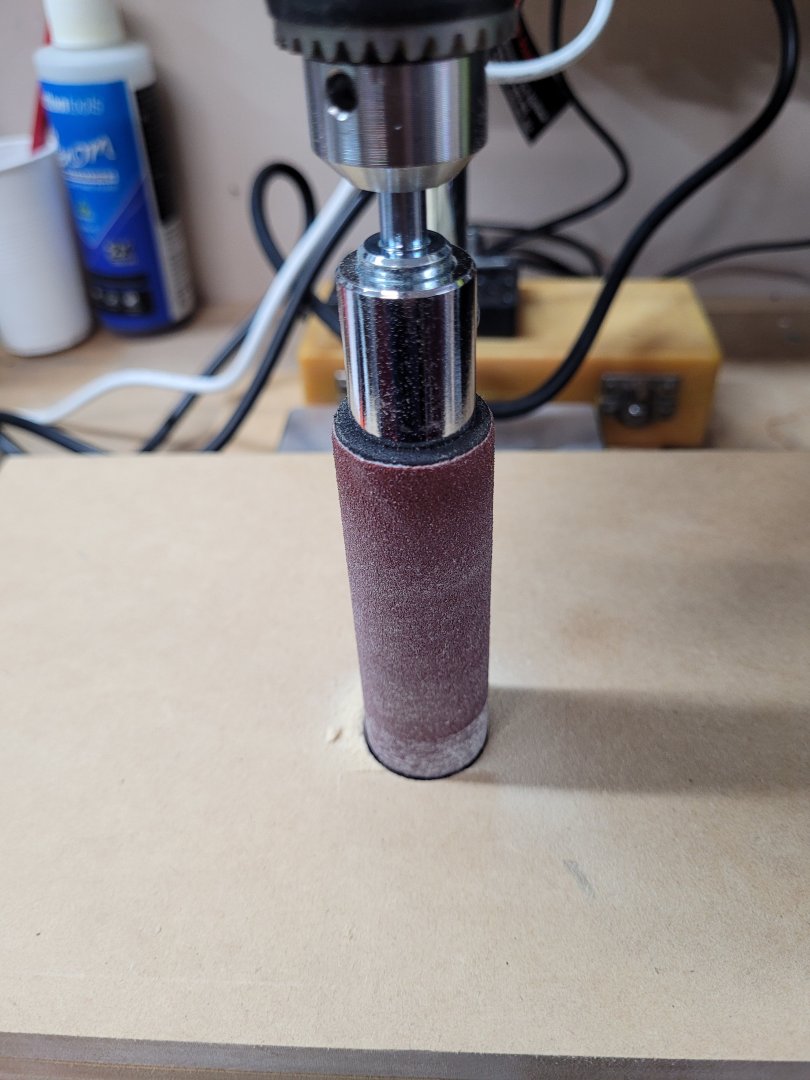
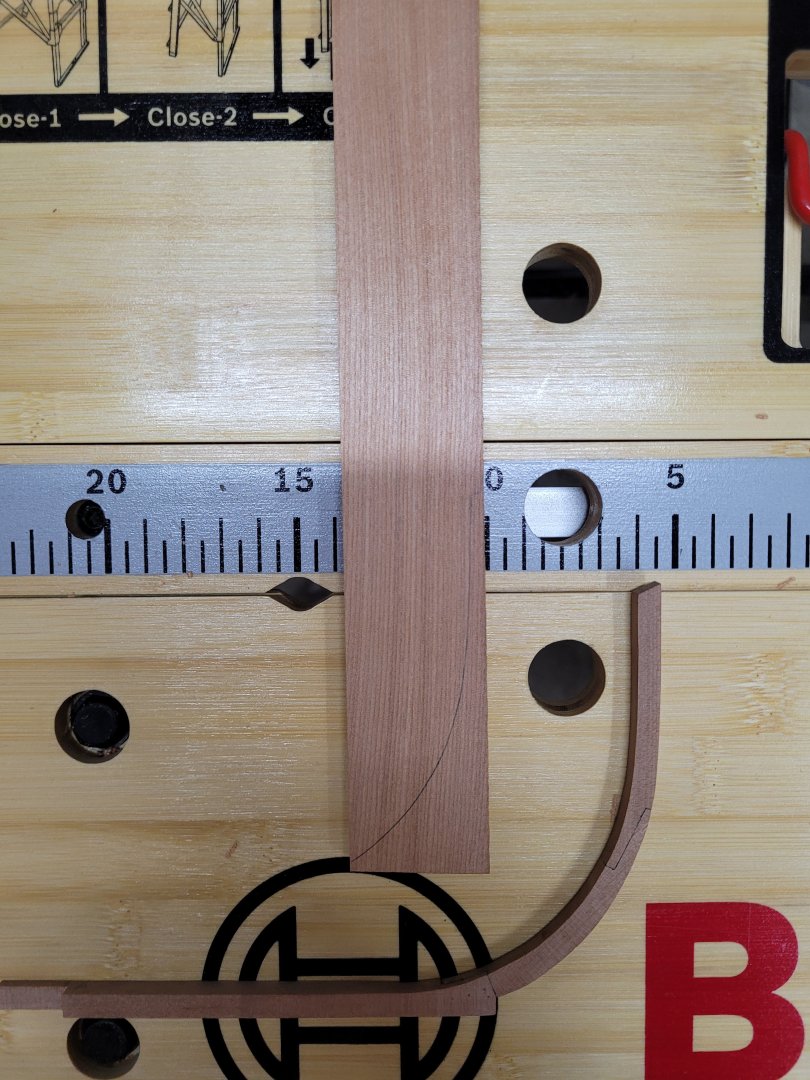

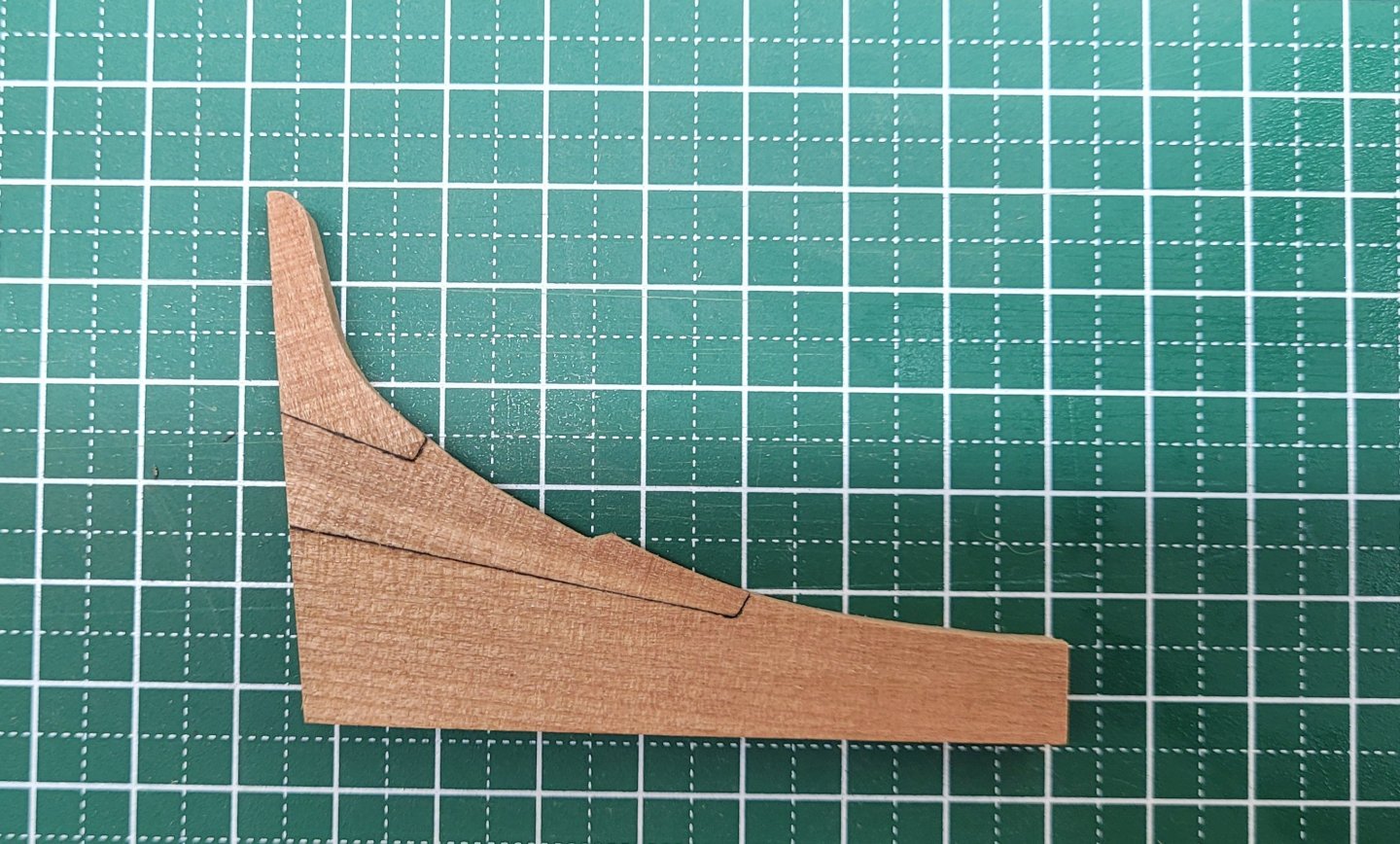

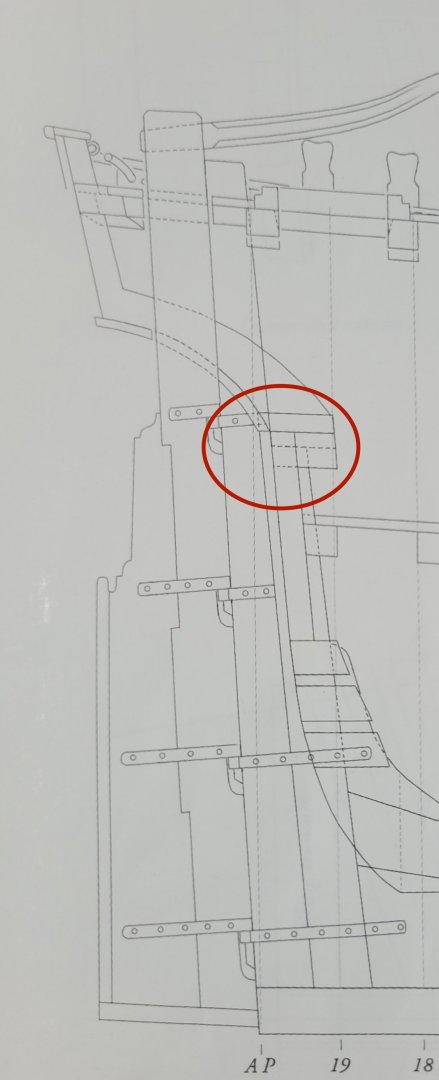

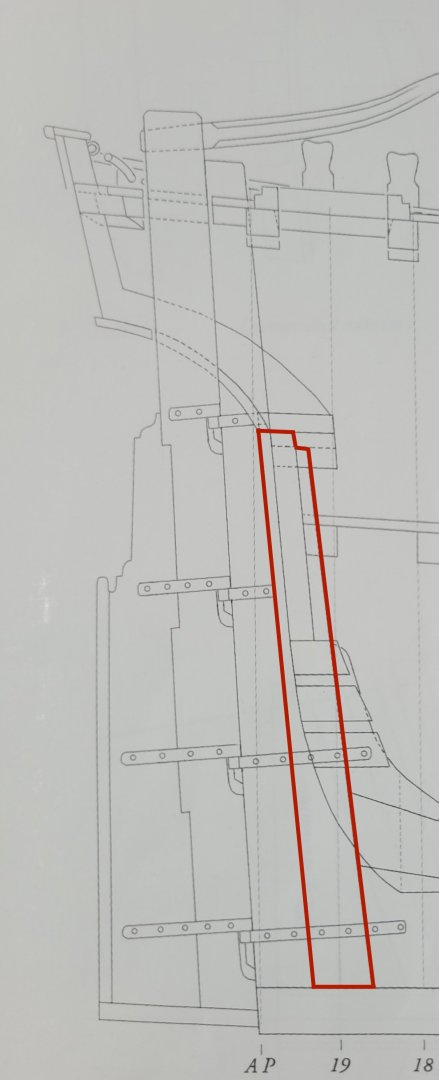
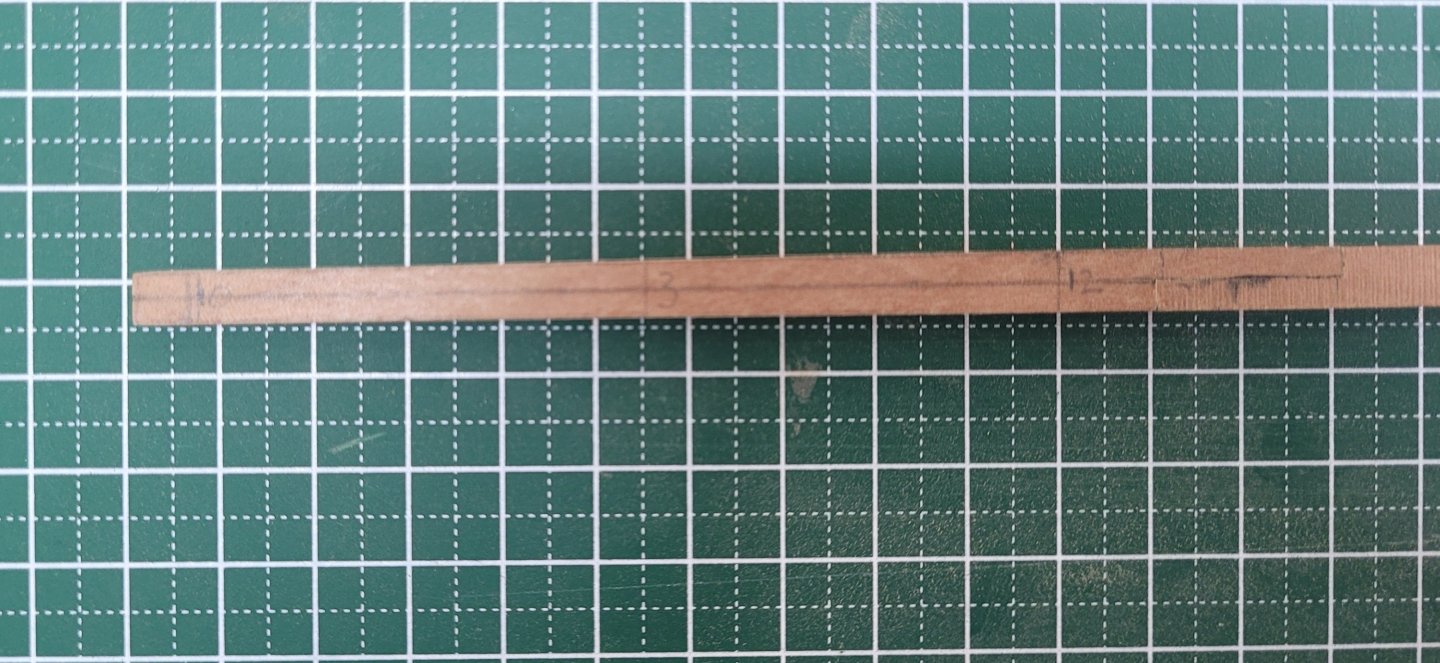
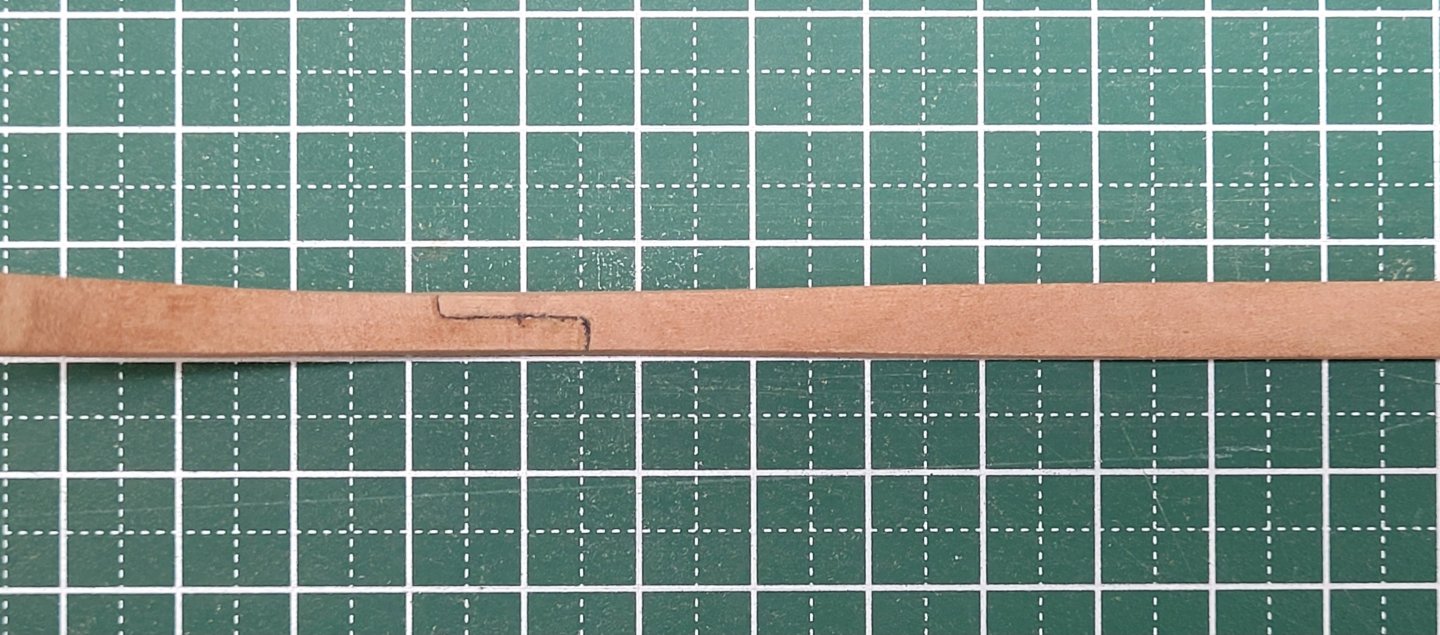
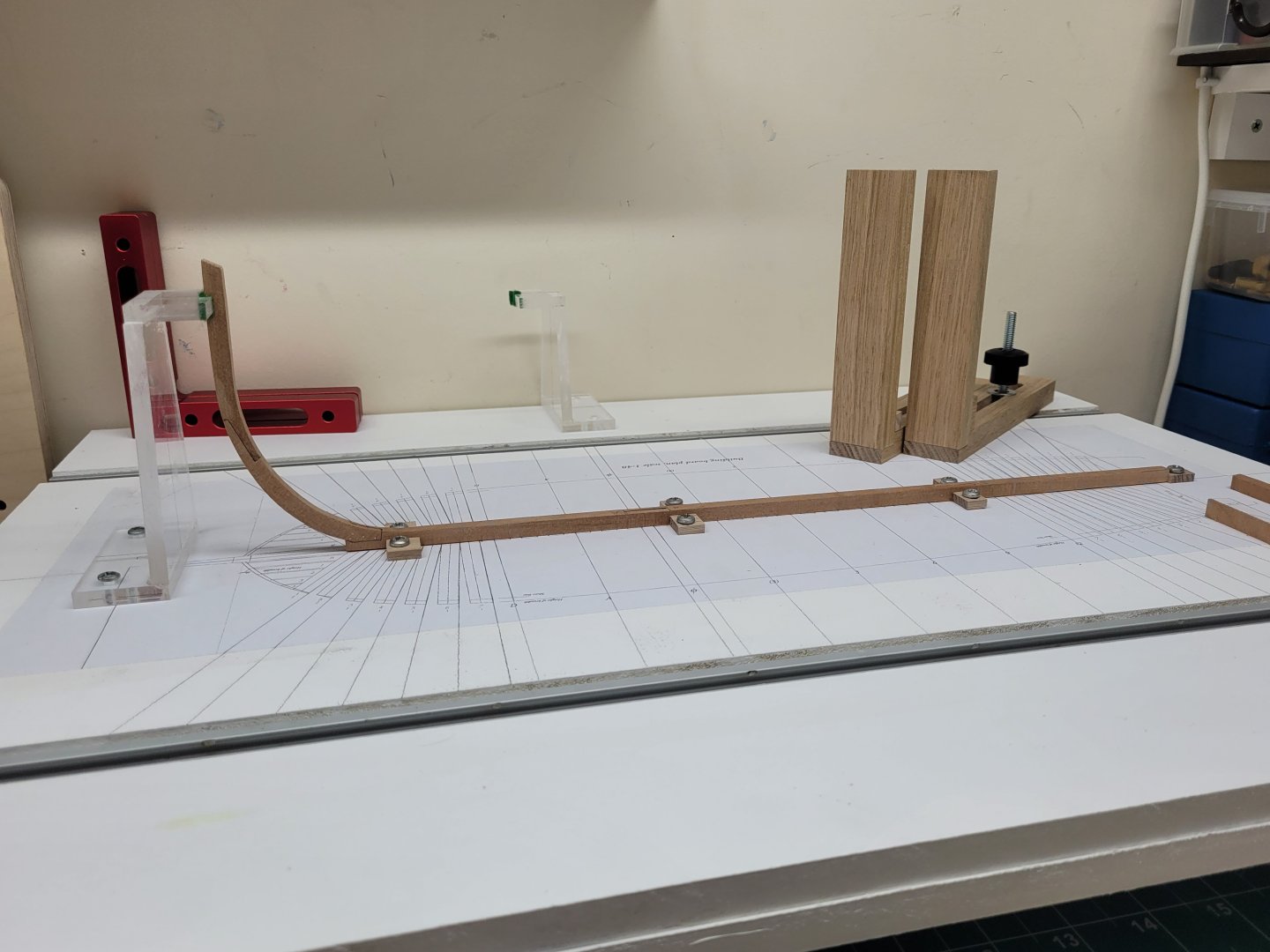
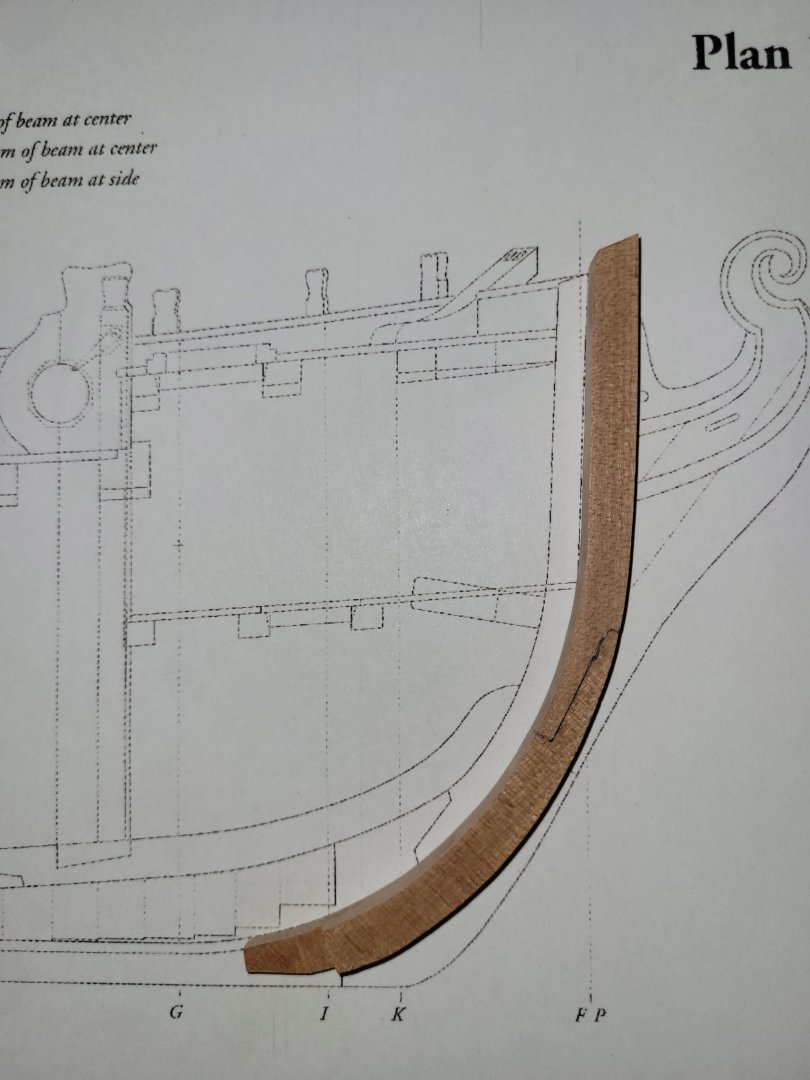
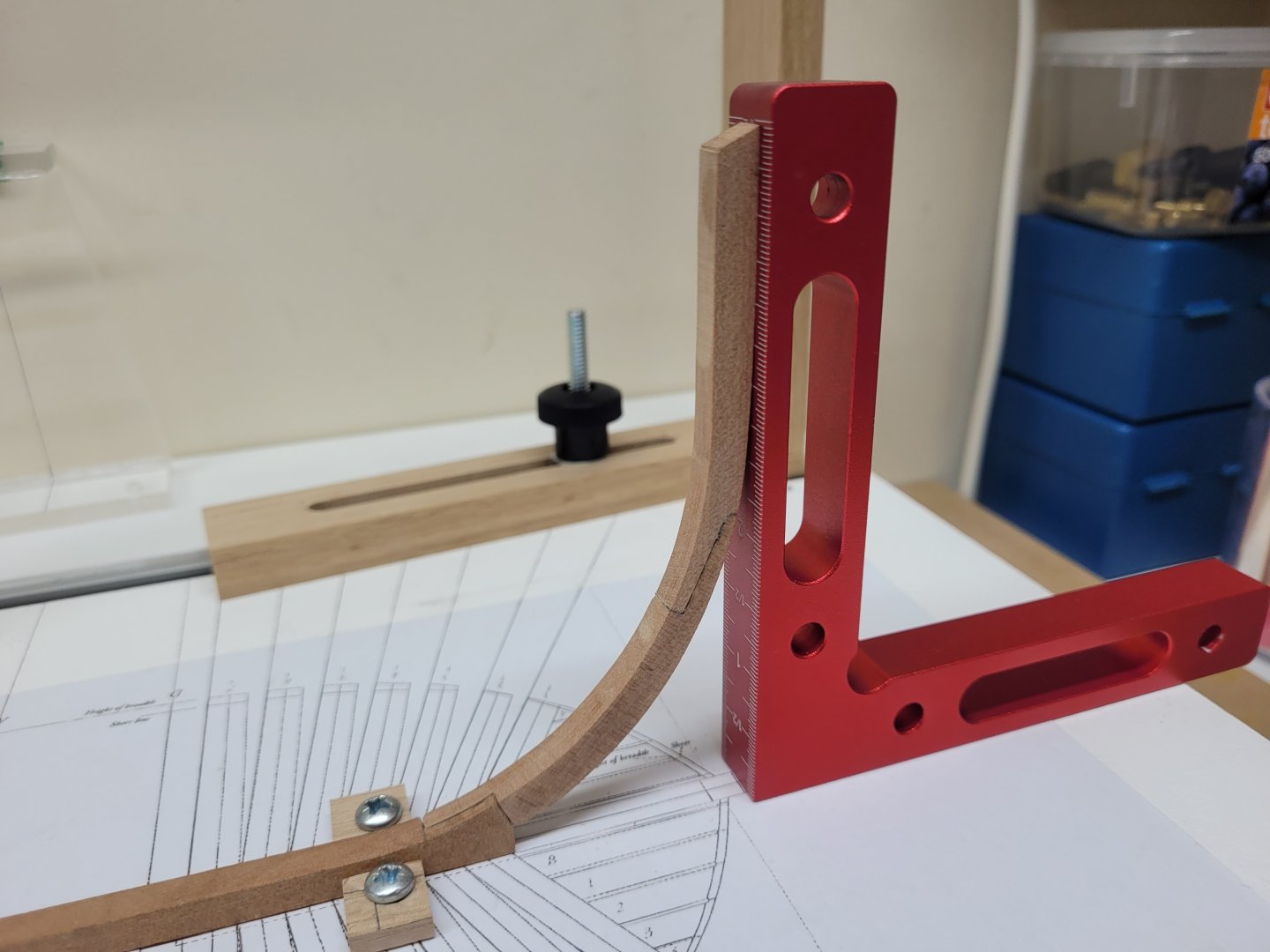
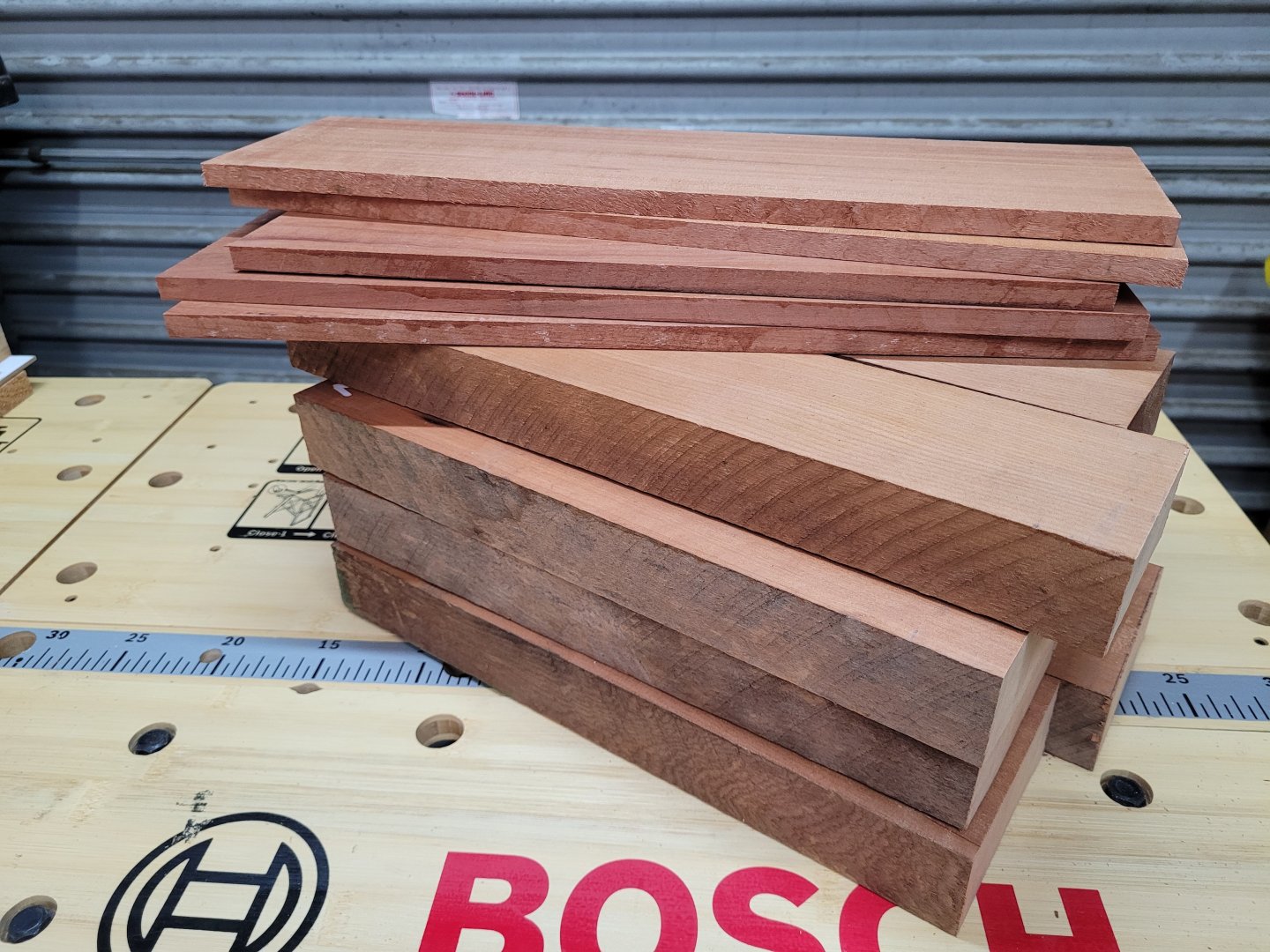
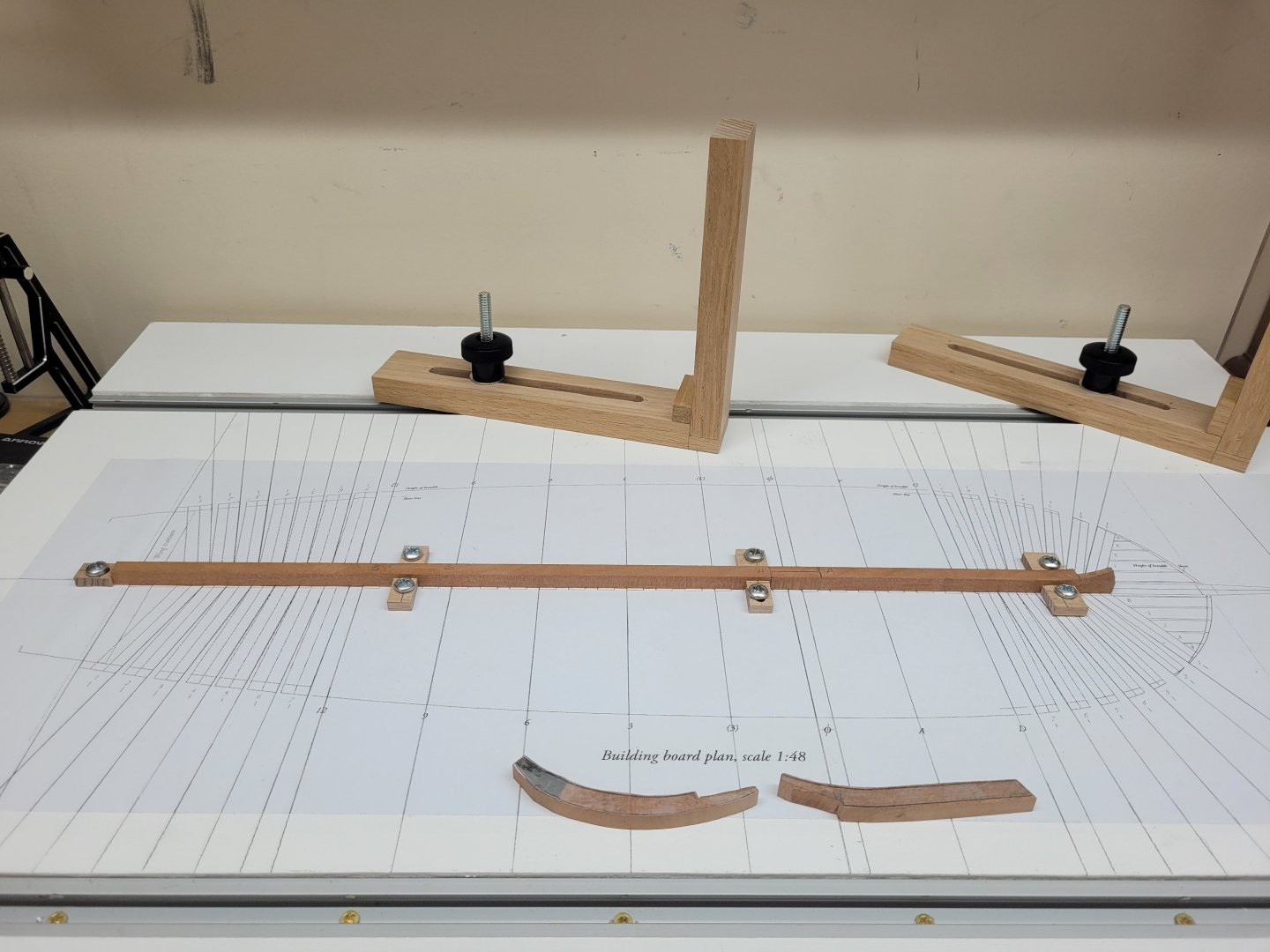
HMS Indefatigable 1794 by Blue Ensign - FINISHED - Vanguard Models - 1:64 scale
in - Kit build logs for subjects built from 1751 - 1800
Posted
Brilliant work B.E. !